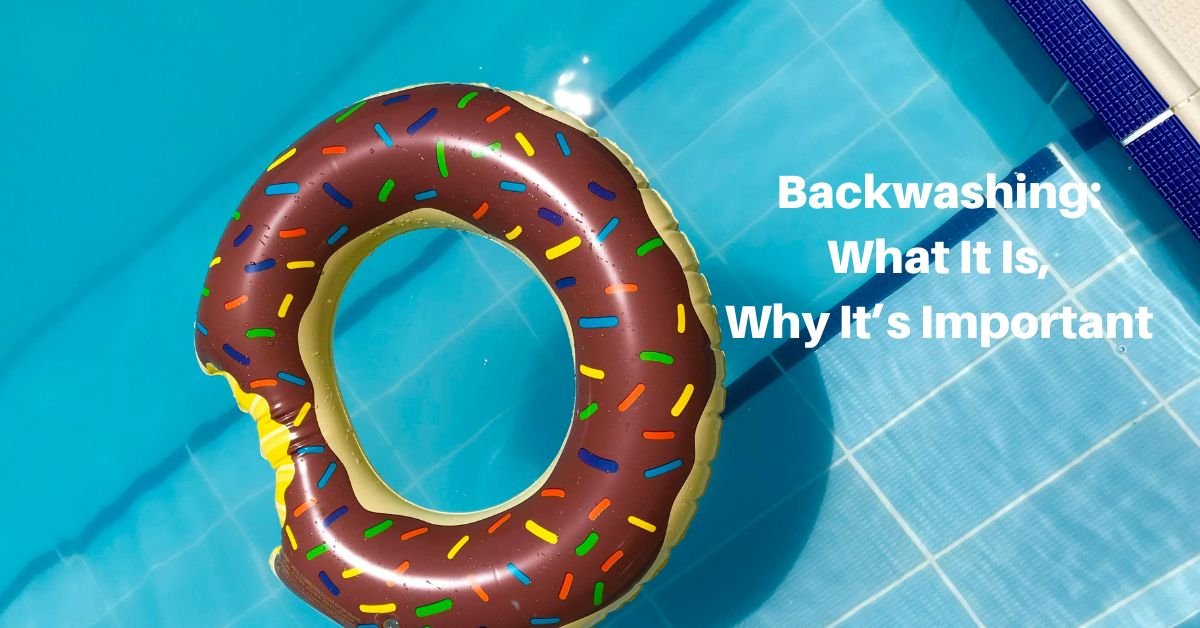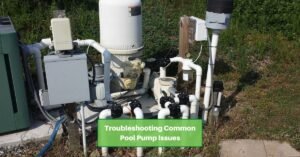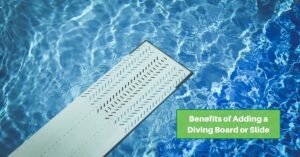At times, our pool water turns a bit cloudy, and the flow from the jets has diminished. We know we’re not the only ones who experience this. It’s often a result of the pool filter operating inefficiently.
Fortunately, rectifying the situation by backwashing the filter is often easy. This discovery led us to understand just how vital regular filter maintenance is to keeping our pool crystal clear and functioning efficiently. Today, we’ll share what we’ve learned about this simple yet critical routine that every pool owner should master.
What Is Backwashing?
Backwashing is a maintenance procedure for cleaning pool filters. In it, you reverse the water flow through the filter to remove trapped debris and dirt. This process is essential for extending the filter’s life and ensuring your pool remains healthy and inviting.
The need for backwashing and the method used can vary depending on your filter type:
- Sand Filters: These filters trap dirt and debris in a bed of sand. Backwashing flushes this material out, keeping the filter effective.
- Diatomaceous Earth (DE) Filters: DE filters use fine powder to capture debris. Like sand filters, they require regular backwashing to remove accumulated dirt.
- Cartridge Filters: These do not typically require backwashing. Instead, the cartridges are removed and cleaned manually with a hose.
When to Backwash Your Pool Filter
Knowing the right time to backwash your pool filter is vital for optimal performance. Here are a few signs that it might be time to backwash:
- Increased Pressure Gauge Readings: Dirt accumulates in the filter, raising the pressure. Most filters must be backwashed when the pressure reaches 8-10 psi above normal operating levels.
- Reduced Water Flow: If the water flow through your pool’s circulation system has decreased, it may mean that the filter is clogged and needs backwashing.
Other reasons could cause these issues, but backwashing is the most common. It’s essential to regular maintenance and the best place to start if the water flow seems low or the pressure gauge is high.
Step-by-Step Guide to Backwashing
Backwashing should be a regular part of your pool maintenance routine, especially during peak swimming seasons. Here’s how to do it effectively:
- Turn Off the Pump: Always ensure the pool pump is off before changing the settings on your filter to prevent damage to the system.
- Set the Valve: Adjust the multiport valve to the “Backwash” position. For systems with a push-pull valve, this involves pulling up on the valve.
- Turn On the Pump: With the valve set, turn the pump back on. Water will flow through the filter backward, lifting and flushing out the accumulated debris. Watch the sight glass on the filter; the backwashing process is complete when the water runs clear.
- Rinse the Filter: After backwashing, set the valve to “Rinse” for about 20-30 seconds with the pump on. This helps to stabilize the sand or DE media before returning to normal filtration. (Remember to turn the system off first and allow it to power down before switching modes!)
- Return to Normal: Return the valve to its normal filtration setting and turn the system back on. Ensure everything is running smoothly and the pressure gauge returns to normal levels.
Tips for Efficient Backwashing
Backwashing is a straightforward process. But you can maximize its efficiency to save time and extend the life of your pool filter. Here are some tips to ensure you’re backwashing effectively and not more than necessary:
- Monitor, Don’t Schedule: Rather than backwashing on a fixed schedule, monitor your pool’s pressure gauge to determine when backwashing is needed. This prevents unnecessary backwashing, which can waste water and reduce the filter’s effectiveness.
- Be Thorough But Brief: When backwashing, keep the process as short as possible while ensuring the water runs clear. This minimizes water waste and ensures you only use as much water as necessary to clean the filter.
- Check and Maintain Equipment: Regularly inspect your backwash valve and hoses for leaks or wear. A malfunctioning valve or a leak in the line can undermine the efficiency of backwashing and lead to water loss.
The Environmental Impact of Backwashing
Backwashing a pool filter does have some environmental implications, primarily due to the significant amount of water used in the process. As responsible pool owners, it’s essential to consider ways to minimize these impacts:
- Water Conservation: To reduce the volume of water lost during backwashing, ensure that each session is as efficient as possible. Consider capturing the backwash water in a tank and using it to water plants or other suitable non-potable purposes, provided it doesn’t contain harmful chemicals.
- Chemical Use: Be mindful of the chemicals flushed out of your pool during backwashing. Using fewer chemicals or switching to more environmentally friendly options can reduce the potential negative impacts on the local ecosystem.
Maintaining a Healthy Pool Environment
Sustaining a clean and efficient pool goes beyond regular backwashing. Here are additional strategies to keep your pool in top condition:
- Regular Testing and Adjustment: Regular testing and adjustments keep your pool water chemistry balanced. This helps prevent algae growth and reduces the frequency of backwashing needed by keeping the water cleaner.
- Use a Pool Cover: Reducing debris and dirt entering the pool can significantly reduce the need for backwashing. Covering your pool when it’s not in use is an effective way to keep your pool clean and reduce maintenance.
- Educate Your Pool Users: Encourage cleanliness and proper pool use among all swimmers. Simple actions like showering before entering the pool can drastically reduce the contaminants introduced into the water, thereby maintaining cleaner filter media for more extended periods.
Backwashing is a critical component of pool maintenance, essential for keeping your swimming environment healthy and your pool machinery running efficiently. Understanding the correct procedures and adopting responsible practices can ensure that your pool remains a wonderful part of your outdoor space for years. Remember, the goal is not just to maintain a pool but to do so sustainably for both your home and the environment.









